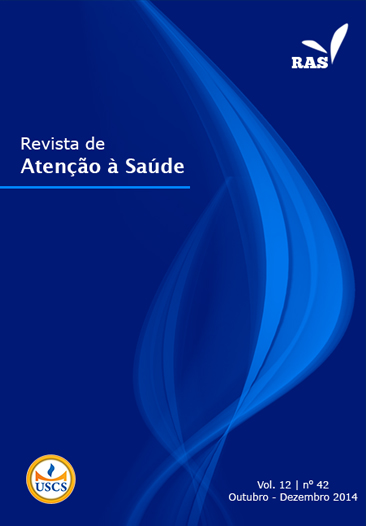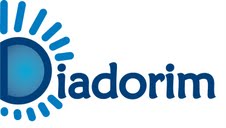PROCESSOS INFLAMATÓRIOS DA OBESIDADE
DOI:
https://doi.org/10.13037/rbcs.vol12n42.2310Keywords:
Obesidade, Inflamação, tecido adiposo, NutriçãoAbstract
Introdução: A prevalência da obesidade vem crescendo ano após ano em todo o mundo, já sendo considerada pela Organização Mundial da Saúde (OMS) como uma epidemia mundial. Dados brasileiros revelam que mais de 13% da população é obesa. Objetivo: Revisar a literatura acerca da interferência dos fatores inflamatórios na obesidade. Métodos: A revisão crítica foi elaborada a partir da compilação de artigos de revisão e estudos originais publicados entre 2010 e 2013, indexados em português e inglês nas bases de dados SciELO e PubMed. As palavras-chave utilizadas nas pesquisas foram obesidade, tecido adiposo, inflamação, adipocinas e fatores de crescimento. Resultados: A compilação dos artigos selecionados esclarece e fortalece o conceito da obesidade como uma doença inflamatória, com maior expressão, em obesos, de adipocinas pró-inflamatórias como a interleucina-6, fator de necrose tumoral-alfa, adipsina, angiotensinogênio, leptina, resistina e visfatina e menor expressão das adipocinas anti-inflamatórias, interleucina-10, adiponectina e SFRP5. Além disto, os resultados demonstram que alguns fatores de crescimento também estão envolvidos no processo inflamatório da obesidade. Conclusão: Conclui-se que, com o grande número de artigos publicados em inglês e em português, a literatura científica hoje nos fornece uma melhor compreensão do processo inflamatório na obesidade, no entanto, muitos mecanismos envolvidos ainda precisam ser investigados e esclarecidos. Dessa forma, pesquisas nesse campo devem ser incentivadas para melhor embasamento das medidas de promoção à saúde, prevenção e tratamento da obesidade e suas comorbidades.
Downloads
References
1. World Health Organization. World Health Statistics. 2012: 35-6.
2. Instituto Brasileiro de Geografia e Estatística. Pesquisa de Orçamentos Familiares, 2008-2009: desnutrição cai e peso das crianças brasileiras ultrapassa padrão internacional. [citado em: 15 out. 2012]. Disponível em: http://ibge.gov.br/home/presidencia/noticias/noticia_vizualiza.php?id-noticia=1699&id_pagina=1
3. Hotamisligil GS, Shargill NS, Spiegelman BM. Adipose expression of tumor-necrosis-factor-alpha-direct role in obesity-linked insulin resistance. Science. 1993; 259(5091): 87-91.
4. Bullo M, Casas-Agustench P, Migo-Correig P, Aranceta J, Salas Salvado J. Inflammation, obesity and comorbidities: the role of diet. Public Health Nutr. 2007; 10(10A): 1164-72.
5. Shah A, Mehta N, Reilly MP. Adipose inflammation, insulin resistance, and cardiovascular disease. JPEN J Parenter Enteral Nutr. 2008; 32(6): 638-44.
6. Prado WL, Lofrano MC, Oyama LM, Damaso AR. Obesidade e adipocinas inflamatórias: implicações práticas para a prescrição de exercício. Rev Bras Med Esporte. 2009; 15(5): 378-83.
7. Boström P, Wu J, Jedrychowski MP, Korde A, Ye L, Lo JC, et al. A PGC1α-dependent myokine that drives browning of white fat and thermogenesis. Nature. 2012; 481(7382): 463-8.
8. Porter SA, Massaro JM, Hoffman U, Vasan RS, O’Donnel CJ, Fox CS. Abdominal subcutaneous adipose tissue: a protective fat depot? Diabetes Care. 2009; 32: 1068-75.
9. Fonseca-Alaniz MH, Takada J, Alonso-Vale MIC, Lima FB. O tecido adiposo como centro regulador do metabolismo. Arq Bras Endocrinol Metab. 2006; 50(2): 216-29.
10. Ahima RS, Flier JS. Adipose tissue as an endocrine organ. Trends Endocrinol Metab. 2000; 11: 327-32.
11. Cannon B, Nedergaard J. Brown adipose tissue: function and physiological significance. Physiol Rev. 2004; 84: 277–359.
12. Saito M. Brown adipose tissue as a regulator of energy expenditure and body fat in humans. Diabetes Metab J. 2013; 37: 22-9.
13. Handschin C, Spiegelman BM. The role of exercise and PGC1alpha in inflammation and chronic disease. Nature. 2008; 454: 463-9.
14. Martínez AC, Alvarez-Mon M. El sistema inmume (I): Conceptos generales, adaptaciónal, ejercício físico e implicaciones clínicas. Arch Med Deporte. 1999; 69: 47-54.
15. Carvalho MHC, Colaço AL, Fortes ZB. Citocinas, disfunção endotelial e resistência à insulina. Arq Bras Endocrinol Metab; 2006.
16. Fernández-Sánchez A, Madrigal-Santillán E, Bautista M, Esquivel-Soto J, Morales-Gonzáles A, Esquivel-Chirino C, et al. Inflammation, oxidative stress and obesity. International Journal of Molecular Sciences. 2011; 12(5): 3117-32.
17. Souza JR, Oliveira RT, Blotta MH, Coelho OR. Níveis séricos de interleucina-6 (IL-6), interleucina-18 (IL-18) e proteína C reativa (PCR) na síndrome coronariana aguda sem supradesnivelamento do ST em pacientes com diabete tipo
2. Arq Bras Cardiol. 2008; 90(2): 94-9. 18. Ziccardi P, Nappo F, Giugliano G, Esposito K, Marfella R, Cioffi M, et al. Reduction of inflammatory cytokine concentrations and improvement endothelial functions in obese women after weight loss over one year. Circulation. 2002; 105: 804-9.
19. Steemburgo T, Azevedo MJ, Martínez JA. Interação entre gene e nutriente e sua associação à obesidade e ao diabetes melito. Arq Bras Endocrinol Metab, São Paulo. 2009; 53(5): 497-508.
20. Guimarães DED, Sardinha FLC, Mizurini DM, Carmo MGT. Adipocitocinas: uma nova visão do tecido adiposo. Rev Nutr. 2007; 20(5): 549-59.
21. Van Hall G, Steensberg A, Sacchetti M, Fischer C, Keller C, Schjerling P, et al. Interleukin-6 stimulates lipolysis and fat oxidation in humans. J Clin Endocrinol Metab. 2003; 88(7): 3005-10.
22. Montani JP, Antic V, Yang Z, Dulloo A. Pathways from obesity to hypertension: from the perspective of a vicious triagle. Int J Obesity. 2002; 26: S28-S38.
23. Barbosa VS, Rego JS, Nílzio A. Possível papel das adipocinas no lúpus eritematoso sistêmico e na artrite reumatoide. Rev. Bras. Reumatol. [on-line]. 2012; 52(2): 278-87.
24. Fonseca-Alaniz, MH, Takada J, Alonso-Vale MI, Lima FB. O tecido adiposo como órgão endócrino: da teoria à prática. J. Pediatr, Rio de Janeiro. [on-line]. 2007; 83(5): S192-S203.
25. Blogowski W, Budkowska M, Salata D, Serwin K, Dolegowska B, Lokaj M, et al. Clinical analysis of selected complement-derived molecules in human adipose tissue. J Transl Med. 2013; 11: 11.
26. Maclaren RE, Cui W, Lu H, Simard S, Cianflone K. Association of adipocyte genes with ASP expression: a microarray analysis of subcutaneous and omental adipose tissue in morbidly obese subjects. BMC Med Genomics; 2010.
27. Levy MN, Koeppen BM, Stanton BA. Fundamentos de fisiologia. Tradução de Nephtali Segal Grinbaum [et al.]. 4 ed. Rio de Janeiro: Elsevier; 2006.
28. Kalupahana NS, Massiera F, Quignard-Boulange A, Ailhaud G. Overproduction of angiotensinogen from adipose tissue induces adipose inflammation, glucose intolerance, and insulin resistance. Obesity (Silver Spring). 2012; 20: 48-56.
29. Kalupahana N S, Moustaid-Moussa N. The renin-angiotensin system: a link between obesity, inflammation and insulin resistance. Obes Rev. 2012; 13: 136-49.
30. Carroll WX, Kalupahana NS, Booker SL, Siriwardhana N, LeMieux M, Saxton AM, et al. Angiotensinogen gene silencing reduces markers of lipid accumulation and inflammation in cultured adipocytes. Front Endocrinol (Lausanne). 2013; 4: 10.
31. Zhang Y, Proença R, Maffie M, Barone M, Leopold L, Friedman JM. Positional cloning of the mouse obese gene and its human homologue. Nature. 1994; 372: 425-32.
32. Lord GM, Matarese G, Howard JK, Baker RJ, Bloom SR, Lechler RI. Leptin modulates the T-cell immune response and reverses starvation-induced immunosuppression. Nature. 1998; 394: 897-901.
33. Fruhbeck G, Gomez-Ambrosi J, Muruzábal FJ, Burrell MA. The adipocyte: a model for integration of endocrine and metabolic signaling in energy metabolism regulation. Am J Physiol Endocrinol Metab. 2001; 280: E827-47.
34. Zuo H, Shi Z, Yuan B, Dai Y, Wu G, Hussain A. Association between serum leptin concentrations and insulin resistance: a population-based study from China. Plos One. 2013; 8(1): e54615.
35. Kim KW, Shin YH, Lee KE, Kim ES, Sohn MH, Kim KE. Relationship between adipokines and manifestations of childhood asthma. Pediatr Allergy Immunol. 2008; 19: 535-40.
36. Mcternan PG, Mcternan CL, Chetty R, Jenner K, Fisher FM, Lauer MN, et al. Increased resistin gene and protein expression in human abdominal adipose tissue. J Clin Endocrinol Metabol. 2002; 87: 2407-10.
37. Larochelle J, Freiler J, Dice J, Hagan L. Plasma resistin levels in asthmatics as a marker of disease state. J Asthma. 2007; 44: 509-13.
38. Loureiro C, Pinto AM, Muc M, Pereira SV. Valores de resistina, adiponectina e leptina em doentes com asma e excesso de peso. Rev Port Imunoalergologia. 2012; 20(2): 121-8.
39. Antuna-Puente B, Feve B, Fellahi S, Bastard JP. Adipokines: the missing link between insulin resistance and obesity. Diabetes Metab. 2008; 34(1): 2-11.
40. Moschen AR, Kaser A, Enrich B, Mosheimer B, Theurl M, Niederegger H, et al. Visfatin and adipocytokine with pro-Inflammatory and immunomodulating properties. J Immunol. 2007; 178: 1748-58.
41. Fukuhara A, Matsuda M, Nishizawa M, Segawa K, Tanaka M, Kishimoto K, et al. Visfatin: a protein secreted by visceral fat that mimics the effects of insulin. Science. 2005; 307: 426-30.
42. Ledantes JAP. Visfatina: un potencial biomarcador de esteatohepatitis no alcohólica en mujeres con obesidad mórbida no diabéticas [tese]. Reus-Tarragona, Espanha: Universitat Rovira I Virgili; 2013.
43. Romacho T, Azcutia V, Vazquez-Bella M, Matesanz N, Cercas E, Nevado J, et al. Extracellular PBEF/NAMPT/visfatin activates proinflammatory signalling in human vascular smooth muscle cells through nicotinamide phosphoribosyltransferase activity. Diabetologia. 2009; 52: 2455-63.
44. Adya R, Tan BK, Chen J, Randeva HS. Pre-B cell colony enhancing factor (PBEF)/visfatin induces secretion of MCP-1 in human endothelial cells: role in visfatin induced angiogenesis. Atherosclerosis. 2009; 205: 113-9.
45. Fernández RP, Kaski JC. Interleucina-10 y enfermedad coronaria. Rev Esp Cardiol. 2002; 55(7): 738-50.
46. Lopes RD, Batista-Júnior ML, Rosa JC, Lira FS, Martins Jr E, Shimura AY, et al. Alterações na produção de IL-10 e TNF-α no músculo esquelético em ratos com insuficiência cardíaca secundária ao infarto do miocárdio. Arq Bras Cardiol; 2010; 94(3): 313-20.
47. Berg AH, Combs TP, Scherer PE. ACRP30/adiponectin: an adipokine regulating glucose and lipid metabolism. Trends Endocrinol Metab. 2002; 13: 84-9.
48. Funahashi T, Matsuzawa Y, Kihara S. Adiponectin as a potential key player in metabolic syndrome insights into atherosclerosis, diabetes and cancer. Int Congress Series. 2004; 1262: 368-71.
49. Weyer C, Funahashi T, Tanaka S. Hypoadiponectinemia in obesity and type 2 diabetes: close association with insulin
resistance and hyperinsulinemia. J Clin Endocrinol Metab. 2001; 86: 1930-5.
50. Nop M, Havel PJ, Utzschneider KM, Carr DB, Sinha MK, Boyko EJ, et al. Relationship of adiponectin to body fat distribution, insulin sensitivity and plasma lipoproteins: evidence for independent roles of age and sex. Diabetologia. 2003; 46: 459-69.
51. Geloneze B, Pereira JA, Pareja JC, Lima MMO, Lazarin MACT, Souza ICP, et al. Reversão da síndrome metabólica na obesidade mórbida: adiponectina como um marcador da sensibilização à insulina e do aumento do HDL-colesterol após o bypass gástrico. Arq Bras Endocrinol Metab. 2009; 53(2): 293-300.
52. SFRP5 secreted frizzled-related protein 5 [Homo sapiens (human)]. Gene ID: 6425, updated on 10-Mar-2013. [citado em: 02 abr. 2013]. Disponível em: http://www.ncbi.nlm.nih.gov/gene/6425
53. Ouchi N, Higuchi A, Ohashi K, Oshima Y, Gokce N, Shibata R, et al. Secreted frizzled related protein 5 is an anti-inflammatory adipokine that modulates metabolic dysfunction in obesity. Science. 2010; 329: 454-7.
54. Hu W, Li L, Yang M, Luo X, Ran W, Liu D, et al. Circulating Sfrp5 is a signature of obesity-related metabolic disorders and is regulated by glucose and liraglutide in humans. J Clin Endocrinol Metab. 2013, Jan; 98(1): 290-8. doi: 10.1210/ jc.2012-2466.
55. Schulte DM, Müller N, Neumann K, Oberhäuser F, Faust M, Güdelhöfer H, et al. Pro-inflammatory wnt5a and anti-inflammatory SFRP5 are differentially regulated by nutritional factors in obese human subjects. Plos One. 2012; 7(2): e32437.
56. Friedrich N, Jorgensen T, Juul A, Spielhagen C, Nauck M, Wallaschofski H, et al. Insulin-like growth factor I and anthropometric parameters in a Danish population. Exp Clin Endocrinol Diabetes. 2012; 120:171-4.
57. Bjersing JL, Erlandsson AM, Bokarewa MI, Mannerkorp K. Exercise and obesity in fibromyalgia: beneficial roles of IGF-1 and resistin? Arthritis Research & Therapy; 2013.
58. Kaess BM, Pedley A, Massaro JM, Larson MG, Corsini E, HoffmannU, et al. Relation of vascular growth factors with ct-derived measures of body fat distribuition: the Framingham heart study. J Clin Endocrinol Metab, 2012 Mar; 97(3): 987-94.
59. Lysaght J, Van Der Stock EP, Allott EH, Casey R, Donohoe CL, Howard JM, et al. Pro-inflammatory and tumour proliferative properties of excess visceral adipose tissue. Cancer Lett. 2011 Dec;15; 312(1): 62-72.
Downloads
Published
Issue
Section
License
Copyright (c) 2014 Crislene Aschebrock Sippel, Rafaela Mundstock de Azevedo Bastian, Janine Giovanella, Christiane Faccin, Verônica Contini, Simone Morelo Dal Bosco

This work is licensed under a Creative Commons Attribution-NonCommercial-NoDerivatives 4.0 International License.
Policy Proposal for Journals offering Free Delayed Access
Authors who publish in this magazine agree to the following terms:
- Authors maintain the copyright and grant the journal the right to the first publication, with the work simultaneously licensed under a Creative Commons Attribution License after publication, allowing the sharing of the work with recognition of the authorship of the work and initial publication in this journal.
- Authors are authorized to assume additional contracts separately, for non-exclusive distribution of the version of the work published in this magazine (eg, publishing in institutional repository or as a book chapter), with the acknowledgment of the authorship and initial publication in this journal.
- Authors are allowed and encouraged to publish and distribute their work online (eg in institutional repositories or on their personal page) at any point before or during the editorial process, as this can generate productive changes, as well as increase impact and citation of the published work (See The Effect of Open Access).









